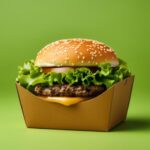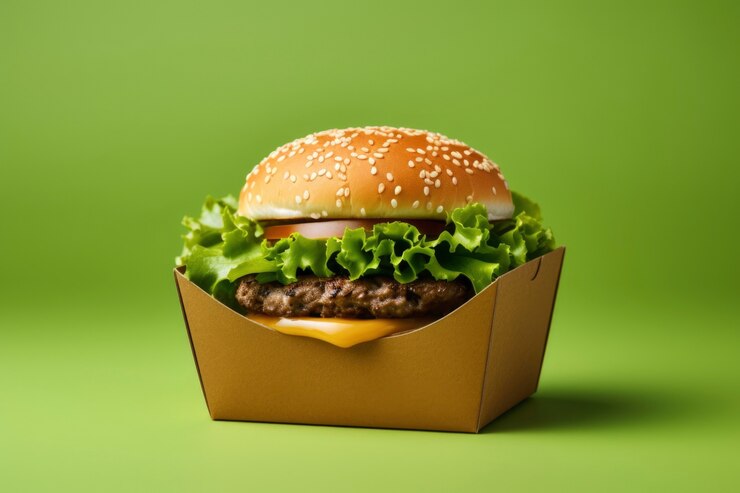“Grow your brand with food packaging boxes. Stand out in the market with personalized designs and branding elements. Contact us today!”
Key Takeaways:
- Custom food packaging boxes are necessary for companies who want to differentiate themselves in the crowded market.
- Using distinctive designs and branding components may improve consumer interaction and brand exposure.
- This book examines the significance of personalized food packaging boxes, as well as design, material, and pricing issues for American businesses.
Introduction To Food Packaging Box
In the fast-paced American food market, packaging is essential for drawing in customers and building brand loyalty. Custom food packaging boxes provide companies with a chance to present their goods in a distinctive and lasting manner. We’ll go over the importance of bespoke food packaging boxes, design techniques, material choices, and budgetary concerns in this extensive guide to help you build your brand and draw in clients.
The Importance of Food Packaging Boxes
Food packaging boxes function as more than mere receptacles; They are effective marketing instruments that companies may use to set their goods apart from the competition and make an impact on customers. Businesses may improve brand exposure, foster loyal customers, and stand out in a competitive market by implementing unique designs and branding features. Let’s examine the main justifications for why firms want bespoke food packing boxes:
| Key Benefits of Food Packaging Boxes |
|---|
| 1. Brand Differentiation: Differentiate yourself from the competition with distinctive branding and package designs. |
| 2. Enhanced Brand Visibility: Personalized packaging increases brand exposure by drawing attention to itself on shop shelves and online. |
| 3. Improved Customer Engagement: Customers are made to feel special with eye-catching designs and personalized touches, which promotes brand loyalty. |
| 4. Product Protection: Personalized food packaging boxes ensures product safety and quality by protecting food during handling, storage, and transit. |
Designing Custom Food Packaging Boxes
Custom food packaging boxes‘ designs are very important for drawing in customers and conveying company values. Every component, including color schemes, images, and typography, needs to be thoughtfully designed to capture the essence of the brand and appeal to the intended market. Some important design factors are as follows:
1. Brand Identity:
To strengthen brand identification and awareness, use branding components like colors, slogans, and logos. Maintaining consistency in packaging designs fosters consumer loyalty and confidence.
2. Visual Appeal:
To grab customers’ attention and stand among store shelves, use eye-catching colors, eye-catching images, and captivating designs. A product with an eye-catching design might persuade buyers to pick it over rivals.
3. Practicality:
Take into account the packaging’s usability, making sure it is simple to open, store, and move. Recurring purchases are encouraged and the overall consumer experience is improved by user-friendly packaging.
Material Options for Custom Food Packaging Boxes
To achieve the intended style, feel, and usefulness, bespoke food packaging boxes must be made of the proper material. There is a range of materials available to meet the demands and desires of different brands, from luxury finishes to eco-friendly solutions. Here are a few well-liked material choices:
1. Cardboard:
For bespoke food packing boxes, cardboard is a flexible and affordable material. It is a green option because it can be recycled and has good printing capabilities.
2. Kraft Paper:
Kraft paper is ideal for companies that care about the environment because of its rustic and natural appearance. It may be personalized using green printing methods and is biodegradable.
3. Corrugated Board:
Corrugated board, which is strong and resilient, offers food goods the best protection possible during handling and transportation. It is perfect for packing heavy-duty and bulky goods.
Cost Considerations and Budgeting
While there are several advantages for companies in using bespoke food packaging boxes, It’s critical to account for the related expenses in your budget. The total cost of packing can be influenced by elements like materials, printing methods, order numbers, and design intricacy. Here are some things to think about while calculating costs:
1. Material Costs:
Select materials that strike a balance between cost and quality. To maximize your budget, take into account the cost per item and savings for big orders.
2. Design and Printing:
To produce packaging that matches your company identity and is aesthetically pleasing, invest in high-quality design and printing. Examine estimates from several vendors to see which offers the most value for your money.
3. Order Quantity:
Take inventory management into account while weighing the advantages of purchasing in bulk. To cut down on waste and storage expenses, don’t overstock.
Conclusion: Elevate Your Brand with Food Packaging Boxes
Custom food packaging boxes are a wise investment for companies trying to stand out from the competition, increase brand awareness, and draw in clients. Businesses can create an unforgettable brand experience that encourages loyalty and boosts sales by combining distinctive designs, branding components, and useful functions. Reach out to us right now to discuss bespoke food packaging options that fit the goals and requirements of your company.
“Packaging is the first impression of a product.” – Bill McCafferty
In the rapidly evolving field of food marketing, personalized packaging may have a profound impact. With personalized food packing boxes, you can uplift your brand and make a lasting impact on customers.
Frequently Asked Questions
Why do businesses need food packaging boxes?

Food packaging boxes are essential for maintaining the freshness and quality of food goods and making sure they reach clients in the best possible shape. Furthermore, packaging is a tool for branding and marketing, enabling companies to convey their values and brand identity to consumers. Food packaging boxes also improve food safety and customer confidence by shielding items from outside influences including tampering, contamination, and damage.
What aspects should I take into account while creating food packaging boxes?
To ensure that food packaging boxes efficiently suit the demands of companies and customers, several aspects need to be considered during the design process. First and foremost, take into account the kind of food item being packaged and choose materials that will best preserve its integrity and freshness. Furthermore, give top priority to functionality, making sure that the package is simple to open, store, and move. Additionally, use branding components like graphics, colors, and logos to establish a unified brand identity and connect with your target audience.
What kinds of materials may be used to make food packaging boxes?
Food packaging boxes come in a range of materials, each having special qualities and advantages of its own. Aluminum, plastic, cardboard, and paperboard are examples of common materials. Popular options because of their cost, adaptability, and environmental friendliness are cardboard and paperboard. Plastic packaging is perfect for perishable food goods since it is highly durable and resistant to moisture. Better barrier qualities are offered by aluminum packaging, which shields food items from air, light, and moisture. Take into account aspects including product suitability, environmental effect, and branding specifications when choosing a material for food packing boxes.
